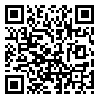Tue, Dec 9, 2025
[Archive]
Volume 6, Issue 10 (2013)
JMED 2013, 6(10): 50-55 |
Back to browse issues page
Download citation:
BibTeX | RIS | EndNote | Medlars | ProCite | Reference Manager | RefWorks
Send citation to:



BibTeX | RIS | EndNote | Medlars | ProCite | Reference Manager | RefWorks
Send citation to:
Keshtkaran A, kaffashi S, Sadeghifar J. A Study on the Relationship between Thinking Styles and Preference Learning Methods among Students of Shiraz University of Medical Sciences . JMED 2013; 6 (10) :50-55
URL: http://edujournal.zums.ac.ir/article-1-128-en.html
URL: http://edujournal.zums.ac.ir/article-1-128-en.html
1- , shahnaz.kaffashi@gmail.com
2- shiraz medical university
2- shiraz medical university
Abstract: (27731 Views)
Background and Objective: Learning is an important area of research in psychology. Learning is a difficult term to define. The goal of this study was to investigate the relationship between thinking styles and preference learning methods among students of management and medical information collage in Shiraz University of Medical Sciences.
Materials and Methods: This was a descriptive cross-sectional study. 136 first and second year students of Management and Medical Information studying in Shiraz University of Medical Sciences were selected. Data gathering tools were VARK and Robert J. Strasburg questionnaires. Data was analyzed with descriptive and inferential statistics, T-test, and Pearson correlation formula.
Results: Students thinking styles and preference learning methods were directly related. Results showed that there was a significant difference between responses to the questionnaires (p≤0.05). Judging style related to writing – reading method (p≤0.05).
Conclusion: As the results between thinking styles and preference learning methods were directly related, teachers and administrators can use these results to increase educational quality. This may be a way to change learning system.
Article Type : Orginal Research |
Subject:
Medical Education
Received: 2012/12/7 | Accepted: 2013/07/28 | Published: 2013/07/28
Received: 2012/12/7 | Accepted: 2013/07/28 | Published: 2013/07/28
Send email to the article author
| Rights and permissions | |
 |
This work is licensed under a Creative Commons Attribution-NonCommercial 4.0 International License. |



